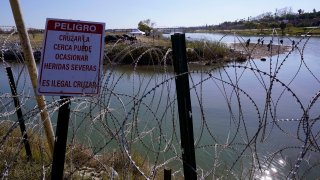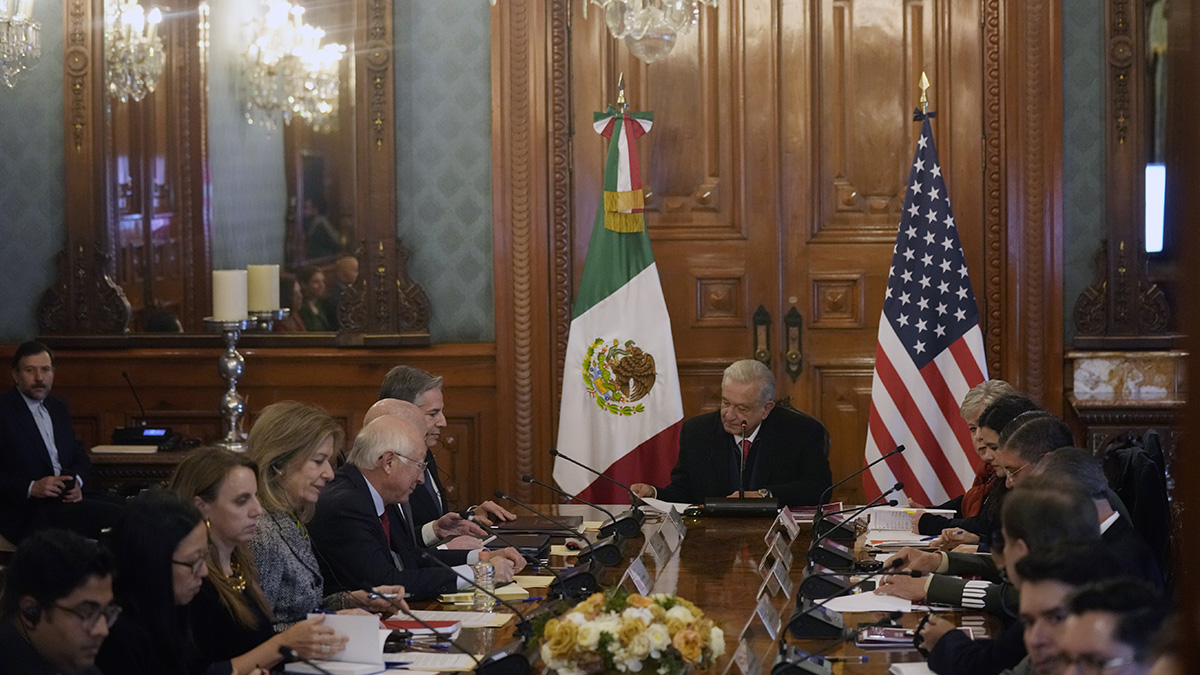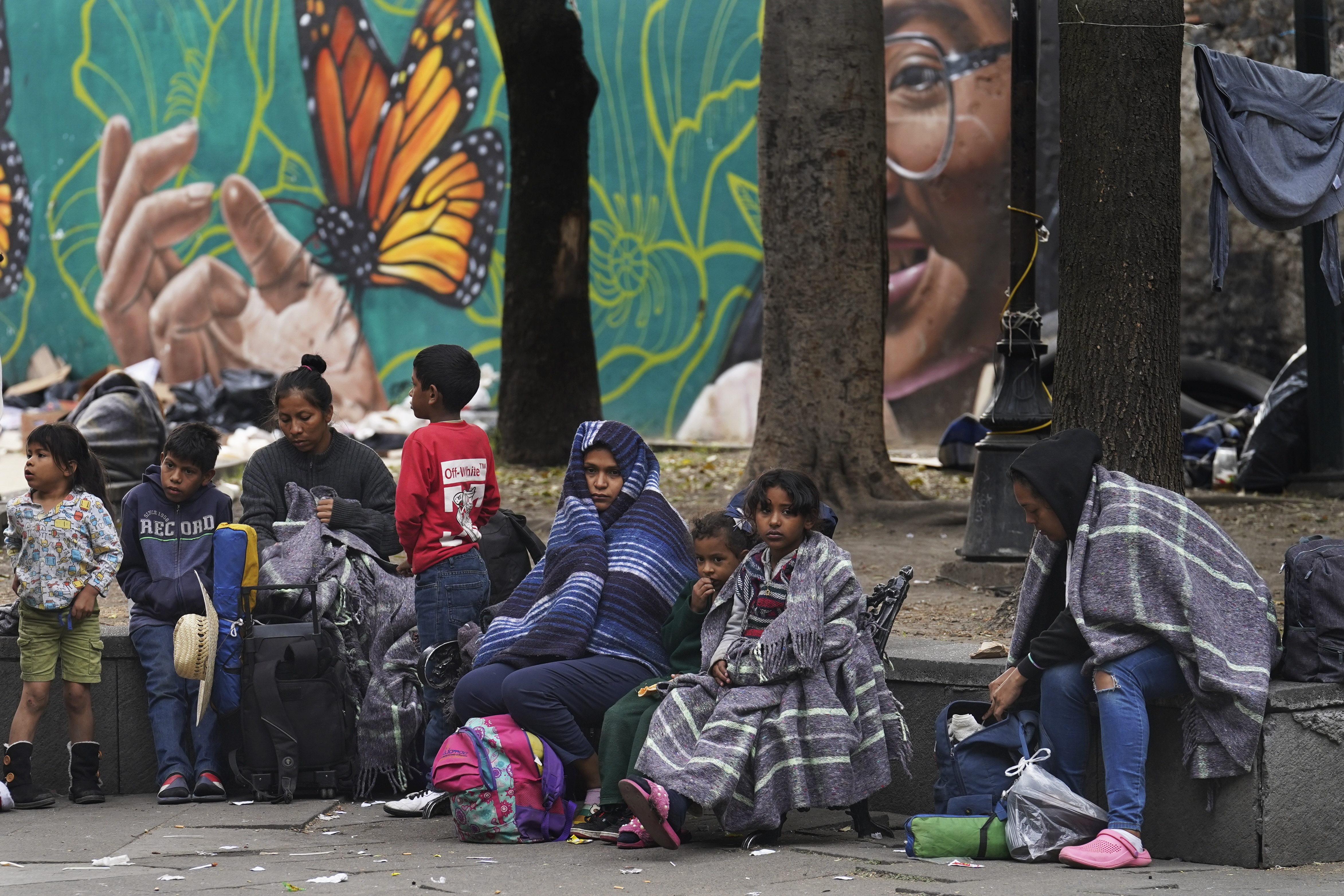
Daniel Bermudez's family had fled Venezuela and was headed to the U.S. to seek asylum when the freight train they were riding through Mexico was stopped by immigration officials.
His wife tried to explain that her family had permission to go to the U.S. Instead, they flew her to Mexico’s southern border as part of a surge of enforcement actions that U.S. officials say have contributed to a sharp drop in illegal border crossings.
In addition to forcing migrants from trains, Mexico also resumed flying and busing them to the southern part of the country and started flying some home to Venezuela.
Even if temporary, the decrease in illegal crossings is welcome news for the White House. President Joe Biden’s administration is locked in talks with Senate negotiators over restricting asylum and $110 billion in aid for Ukraine and Israel hangs in the balance.
Get Southern California news, weather forecasts and entertainment stories to your inbox. Sign up for NBC LA newsletters.
Bermudez said his wife became separated from her family when she talked to authorities as he gathered his stepchild and their belongings. He wanted to run, but his wife said they shouldn't because they had followed procedure by making an appointment with U.S. immigration authorities.
“I told her, `Don’t trust them. Let’s go into the brush,’” Bermudez said, adding that other migrants had fled. He recalled her telling him, “Why are they sending us back if we have an appointment?”
Last week, Bermudez, his stepchild and two other relatives were waiting for her at a shelter in the Mexican border town of Piedras Negras as she took a bus back in hopes of still making the date.
Mexico’s immigration agency sent at least 22 flights from its border region with the U.S. to southern cities during the last 10 days of December, according to Witness at the Border, an advocacy group that tracks flight data. Most were from Piedras Negras, which is across the border from Eagle Pass, Texas.
Mexico also ran two removal flights to Venezuela with 329 migrants. The stretch was punctuated by U.S. Secretary of State Antony Blinken's visit to Mexico City on Dec. 28 to confront unprecedented crossings to the United States.
Mexican President Andrés Manuel López Obrador said a financial shortfall that had led the immigration agency to suspend deportations and other operations was resolved. He did not offer details.
Arrests for illegal crossings into the U.S. from Mexico fell to about 2,500 on Monday, down from more than 10,000 on several days in December, according to U.S. authorities. In the Border Patrol’s busiest area, arrests totaled 13,800 during the seven-day period ending Friday, down 29% from 19,400 two weeks earlier, according to Tucson, Arizona, sector chief John Modlin.
The drop led U.S. Customs and Border Protection to reopen the port of entry in Lukeville, Arizona, on Thursday after a monthlong closure on the most direct route from Phoenix to its nearest beaches. The U.S. also restored operations at Eagle Pass and three other locations.
Merchants in Eagle Pass, a city of about 30,000 people, saw sales take “a major hit” while a bridge was closed to vehicle traffic so border agents could be reassigned to help process migrants, Maverick County Judge Ramsey English Cantu said.
“We survive pretty much from everything that comes from the Mexican side,” he said.
Last month, CBP resumed freight crossings in Eagle Pass and El Paso, Texas, after a five-day shutdown that U.S. officials said was a response to as many as 1,000 migrants riding atop a single train through Mexico before trying to walk across the border.
In Piedras Negras on Thursday, Casa del Migrante housed about 200 migrants, down from as high as 1,500 recently.
Among them was Manuel Rodriguez, 40, who said his family will miss their appointment to seek asylum that was made through the U.S. government’s CBP One app. He said the appointment was registered with his in-laws, who were deported to Venezuela after authorities boarded the bus they were riding.
"It was all under her name and she lost everything,” Rodriguez said.
Proposals being discussed by the White House and Senate negotiators include a new expulsion authority that would deny rights to seek asylum if illegal border crossings reach a certain threshold. Any such authority would almost certainly depend on Mexico’s willingness to take back non-Mexicans who enter the U.S illegally, something it does now on a limited scale.
Mexico's support was critical to defunct Trump-era policies that forced 70,000 asylum-seekers to wait in Mexico for hearings in U.S. immigration court and to deny rights to seek asylum during the COVID-19 pandemic.
Andrew Selee, president of the Migration Policy Institute in Washington, D.C., cautioned against overstating Mexico's role in the recent drop in traffic. Panama reported that less than 25,000 migrants walked through the Darién jungle in December, about half of October's level and a sign that fewer people are leaving South America for the U.S. Migration usually drops in December amid holidays and cold weather.
“The U.S. is able to lean on Mexico for a short-term enforcement effect on migration at the border, but the long-term effects are not always clear,” Selee said.
___
Spagat reported from San Diego. Christopher Sherman in Mexico City contributed.



